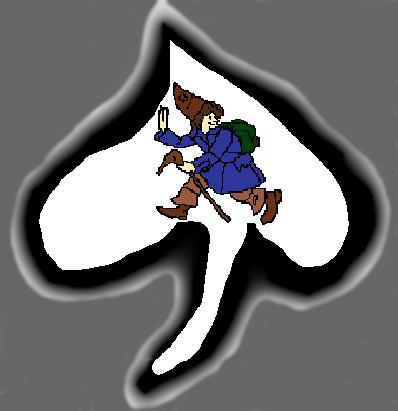Africa
Pleas note the following four paragaraphs are selections from Pastor Arthur Becker's presentation: Sorbs Amongst the Settlers given in July 2008:
"According to a legend, during the ice age, the devil was busy ploughing the bed of the river Spree. After a while his span of oxen were so overcome by fatigue that they just stood still. In a fit of anger the devil threw his cap at them and shouted: “I’ll call my grandmother to come and get you”. This threat scared the oxen to such an extent that they fled in terror dragging the plough after them, this way and that way. The result caused the Spree to break up into more than 330 little streams which have since then also been linked by man-made canals and ditches. UNESCO has declared this unique landscape which is situated about 100 km south of Berlin in the “Bundesland” of Brandenburg, to be a protected biosphere.
In 1857 advert[isement]s began to appear in newspapers all over Germany recruiting settlers for the Cape Colony. Representatives of the firm Dieseldorff of Hamburg also came to Cottbus and surround[ing]s. The promise of 20 English Acres (= 32 Prussian Morgen) of fertile land proved to be irresistable to the day labourer (Tagelöhner) and the son of the community’s shepherd. But one wonders what thoughts went through the minds of August Ballack, and Matthes Forth and family, from Jänschwalde (Jansojce in Sorbian), and of the Lamacks from Maust when they finally disembarked from the “La Rochelle” at East London on the 28th August, 1858. Matthes and Anna Kaschula and 5 children, Martin Gudmainz (Gudmanz) and family, Christian Kockott and family, Martin Mattack and family, Christian Piater and family, Johann Noack and family, all from Werben (Wjerbna in Sorbian) arrived on the “Wandrahm” in December. Liese Kobus, 34 years old, also from Werben, went ashore with her children Liese (13), Matthes (9), August (7), Anne ((3) and Christian (not yet 1 year old). Her husband Matthes had died at sea. The Schemels from Sielow (Zylow in Sorbian), the Schentkes from Cottbus(Chosebuz in Sorbian), the Schischkis, and the Schlodders also arrived on the same ship. Others arrived later on the ships “Wilhelmsburg” and “San Francisco”. This short report appeared in the “Bramborski Casnik” of 1864: My smy, Bogu zek, … glucnje psez daloke morjo psisli … Thanks be to God, we have arrived safely … I have chosen a place 55 English miles from East London on the Amatolo heights … Christmas 1858.
The Wends or Sorbs have been described as strong in bearing the burdens of life, good Christians with mystical tendencies which also lends itself to superstition. Mainly from them came the custom of “Besprechen” of sicknesses in which curious rituals and spells were used to drive away eczema and such like from man and beast. This was done very privately and no payment was to be accepted for this service. I remember that my grandmother had this gift and was reputed to have healed eczema sufferers as well as saved many a child who had contracted measles. Not all that long ago measles was a very life threatening disease. Children greatly feared the “Wodny Muz” (Waterman) whom they believed lurked at the bottom of ponds and streams waiting to pull them down to his domain. One can imagine that this superstition arose to keep little children away from the numerous streams in this countryside.
Why has little or no notice of the Sorb or Wendish settlers been taken? The “Nuwe Geskiedenis van Suid Afrika” edited by Hermann Giliomee and Bernard Mbenga (2007) does not mention the German Settlers of 1858 at all, let alone the Sorbs among them. Well, out of the 445 families that came to South Africa during the years 1858-1861 only 17 were from the Spreewald. In any case they were citizens of Prussia and they spoke German – at least as a second language - and everybody considered them to be Germans, which of course, as far as nationality was concerned, they were. By 1882 one of the settlers wrote a letter in which he laments the fact that their children hardly understood their Sorbian language. Their numbers were not large enough for them to be noticed or to leave any tangible traces of their culture, such as their costumes, “Zapust”, a 3 day festival in the Niederlausitz celebrating the end of winter, and “Kokot”, (“Hahnrupfen” in German) a harvest festival and Johannisreitens . Easter egg painting is certainly a custom which they also practice." -selections from Pastor Arthur Becker's presentation: Sorbs Amongst the Settlers July 2008Evidence of Wends in Africa today...
Approximately 17 Wendish families are known to have migrated to British Kaffraria between 1857 and 1859, the surnames include:
- Ballack,
- Forth,
- Lamack,
- Schepel,
- Brannaschk,
- Gudmanz,
- Haensel,
- Kobus,
- Kockott,
- Noack,
- Paschke,
- Schemel,
- Schischke,
- Schlodder and
- Suppra
Descendants of the original South African Wends to Brittish Kaffraria have helped enrich the local Amathole Museum in King William’s town with recordings in Wendish both of conversations and songs. (hopefuly there will be pictures to post here soon)
A film regarding the original migration of Wends to Africa, entitled “Hoffnung am Kap” Sorbische Spuren in Sudafrika directed by Dr. Toni Bruk from the Sorabia Film studio, is reported to be in existence
At this time, we have had limited resources available to bring together this information. If you or someone you know has more or different information on the Africa Wends, please do contact us.
Many thanks are extended to the following for their aid in presenting this information:
-The Amathole Museum and their Curator of History Ms. Victor
-Pastor Becker
-Mrs. Odenaal
-Mr. Pautz
 Worldwide Wendish Connection
Worldwide Wendish Connection